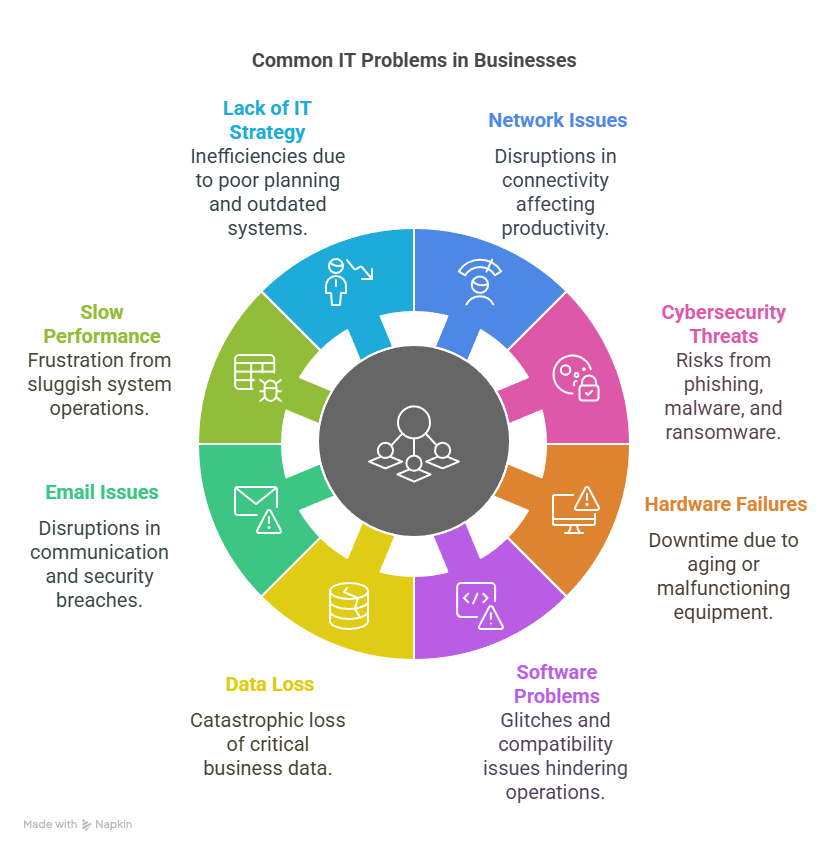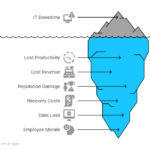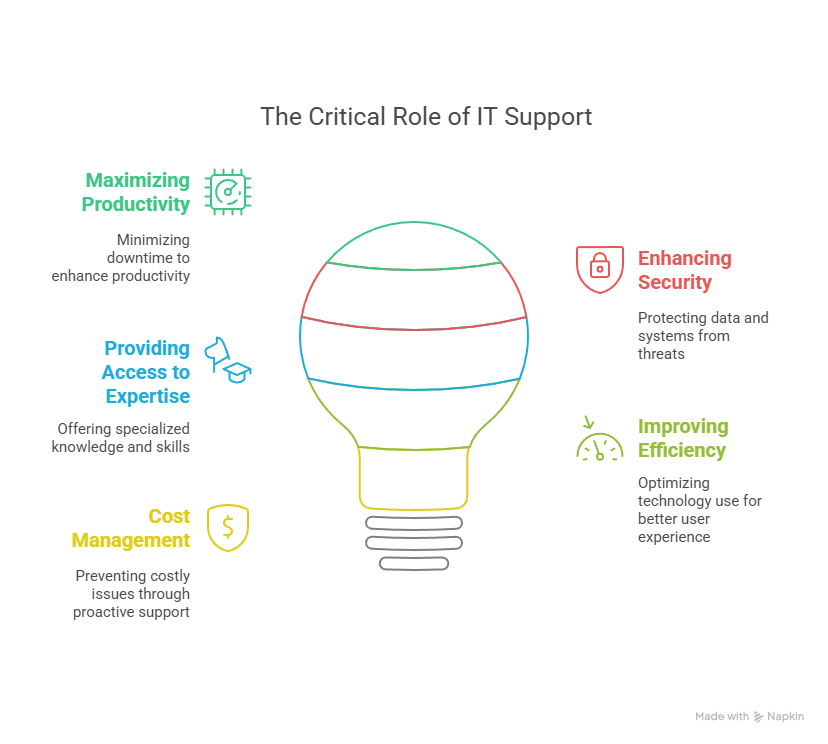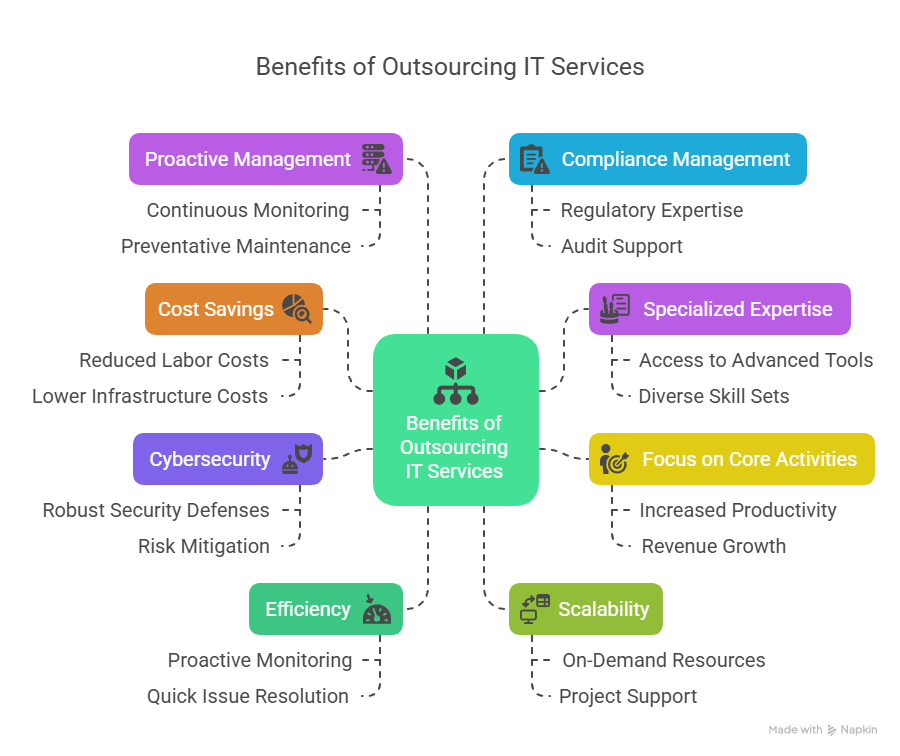Running a business in today’s world means relying heavily on technology. From communicating with clients and managing finances to collaborating with your team and marketing your products, IT is the invisible thread holding everything together. But what happens when that thread frays or snaps?
Technology, while powerful, can also be a major source of frustration and disruption. Understanding the common IT problems businesses face is the first step towards preventing them and keeping your operations running smoothly.
Ignoring persistent IT issues isn’t just annoying; it actively costs your business money through lost productivity, potential security breaches, and damage to your reputation. Whether you’re a small startup or a growing enterprise, chances are you’ve encountered (or will encounter) some of these tech headaches.
Let’s dive into the most frequent culprits and why addressing them proactively is crucial.
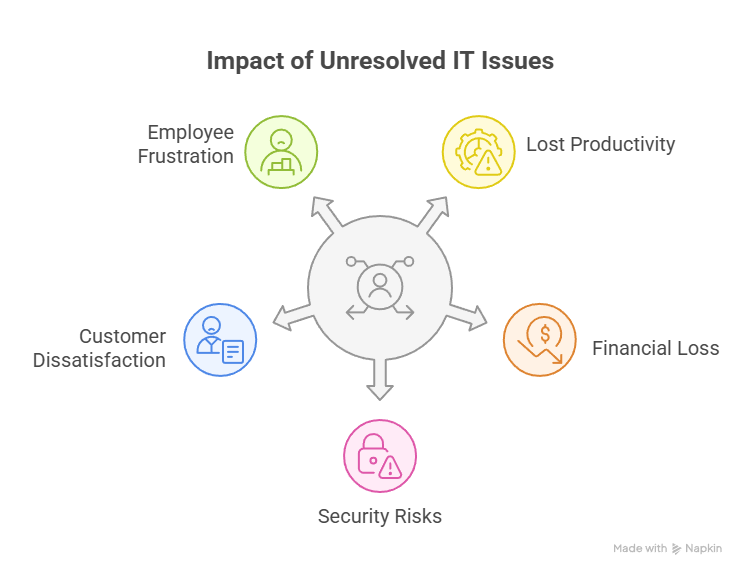
Why Do These IT Problems Matter So Much?
Before we list the problems, let’s quickly establish the stakes. Unresolved IT issues can lead to:
- Lost Productivity: Employees unable to work due to system failures or slow performance.
- Financial Loss: Downtime costs, repair expenses, potential loss of sales, costs associated with data breaches.
- Security Risks: Vulnerabilities leading to data theft, ransomware attacks, or compliance violations.
- Customer Dissatisfaction: Inability to respond promptly or provide services due to tech failures.
- Employee Frustration: Constant tech struggles lower morale and can contribute to burnout.
Recognizing and addressing these common problems is key to mitigating these risks.
Also read: More Than Just Annoying: Understanding The Real Cost of IT Downtime
The Top 10 Common IT Problems Plaguing Businesses
Here are some of the most frequent IT challenges businesses encounter:
1. Network Connectivity & Speed Issues (“The Internet is Down!”)
This is often the most immediate and disruptive problem. Whether it’s slow Wi-Fi, dropped connections, or a complete inability to access the internet or internal resources, network issues bring productivity to a screeching halt. Cloud applications, communication tools, and even basic file sharing depend on a stable network connection. Causes can range from faulty routers and switches to ISP problems or poor network configuration.
2. Cybersecurity Threats (Phishing, Malware, Ransomware)
The threat landscape is vast and constantly evolving. Businesses, especially SMBs perceived as easier targets, face risks from:
- Phishing Scams: Deceptive emails or messages designed to trick users into revealing credentials or clicking malicious links.
- Malware/Viruses: Malicious software that can steal data, damage systems, or disrupt operations.
- Ransomware: Malware that encrypts company data, demanding a hefty ransom for its release (with no guarantee of recovery).
Inadequate security measures, lack of employee training, and unpatched software create vulnerabilities. The UK’s National Cyber Security Centre (NCSC) provides extensive resources on these threats.
3. Hardware Failures & Aging Equipment
Physical devices don’t last forever. Aging computers become slow and unreliable, server hard drives can fail without warning, printers jam constantly, and mobile devices get damaged. Hardware failures lead to downtime while repairs or replacements are sorted, impacting individual or even company-wide productivity.
4. Software Problems (Updates, Compatibility, Glitches)
Software doesn’t always play nice. Issues include failed updates causing instability, conflicts between different applications, unexpected crashes, or features simply not working as intended. Managing software licenses and ensuring compatibility across different systems can also be a significant challenge.
5. Data Loss & Inadequate Backup Procedures
Losing critical business data – customer records, financial information, project files – can be catastrophic. Data loss can occur due to hardware failure, accidental deletion, software corruption, or cyberattacks. The real problem often lies in not having reliable, regularly tested backup procedures in place to recover the lost data quickly.
6. Email Issues (Delivery, Spam, Security)
As a primary communication tool, email problems are highly disruptive. Common issues include emails not being sent or received, legitimate messages being flagged as spam (or vice-versa), mailbox storage limits being reached, and email accounts being compromised for phishing or spamming.
7. Slow System Performance (“Why is my computer so slow?!”)
Few things are more frustrating than a sluggish computer that takes ages to boot up or open applications. Slow performance kills productivity and demoralizes employees. Causes can include insufficient RAM, old hard drives, malware infections, too many background processes, or bloated software.
.
8. Lack of IT Strategy and Planning
Operating without a clear IT roadmap often leads to problems. This includes reactive spending on technology (often leading to higher costs), using outdated systems that hinder efficiency, lack of disaster recovery planning, and misalignment between IT capabilities and business goals.
9. Inadequate IT Support
Whether you rely on an internal person, a break-fix company, or just try to DIY, inadequate support exacerbates all other problems. This manifests as slow response times, unresolved issues, lack of expertise to handle complex problems, or no proactive maintenance being performed, leading to more frequent failures.
10. Remote Work IT Challenges
While not a single problem, the rise of remote work has amplified existing IT challenges and created new ones. These include securing home networks and personal devices (BYOD), ensuring reliable connectivity for remote employees, providing effective remote technical support, and managing collaboration tools securely.
Addressing the Root Cause: Moving from Reactive to Proactive
Many of these common IT problems businesses face stem from a reactive approach to technology management. Lack of investment, insufficient expertise, absence of planning, and delayed maintenance often create a cycle of recurring issues.
Recognizing these common pain points is the essential first step. The next step involves shifting towards a more proactive strategy. This often means investing in regular maintenance, robust security measures, strategic planning, and partnering with skilled IT professionals or reputable service providers who can anticipate and prevent issues before they disrupt your business.
Don’t Let IT Problems Define Your Business
Technology should be an enabler, not a constant source of frustration. While occasional glitches are inevitable, persistent IT problems are a sign that something needs to change. By understanding the common challenges businesses face, you can identify weaknesses in your own setup and take proactive steps to address them.
Investing in reliable IT infrastructure, robust security, and expert support isn’t just an expense; it’s an investment in productivity, security, resilience, and the overall health of your business. Don’t let preventable IT issues hold you back – take control of your technology today.
